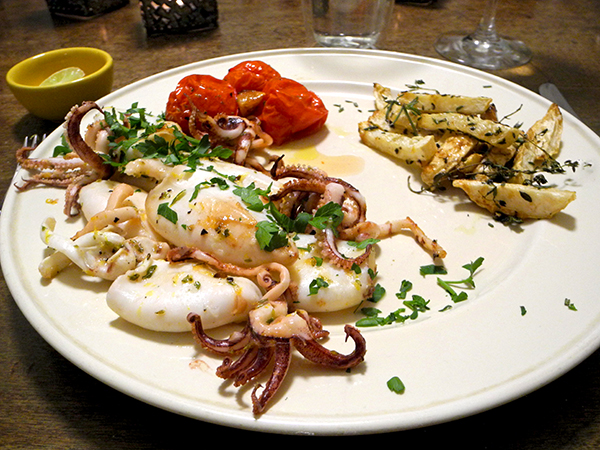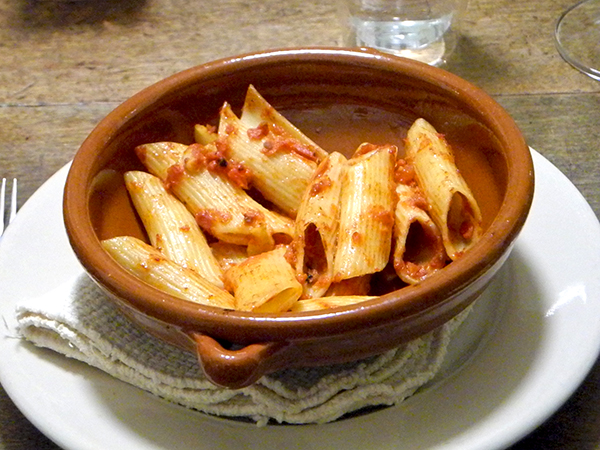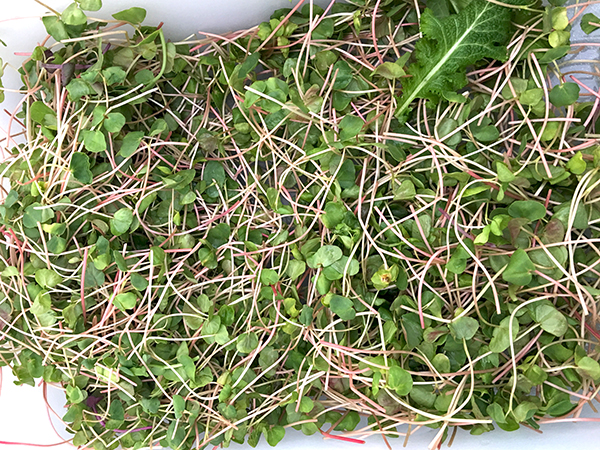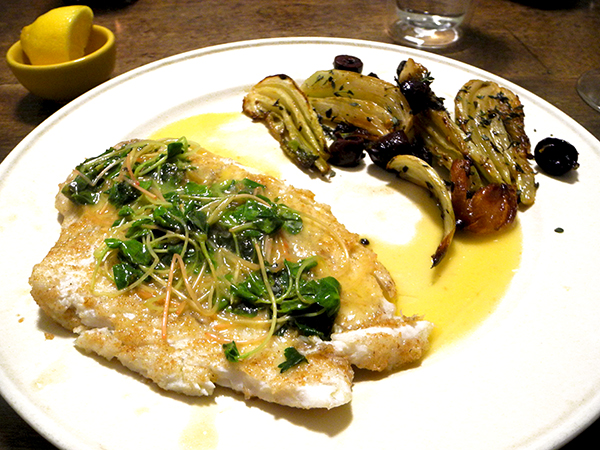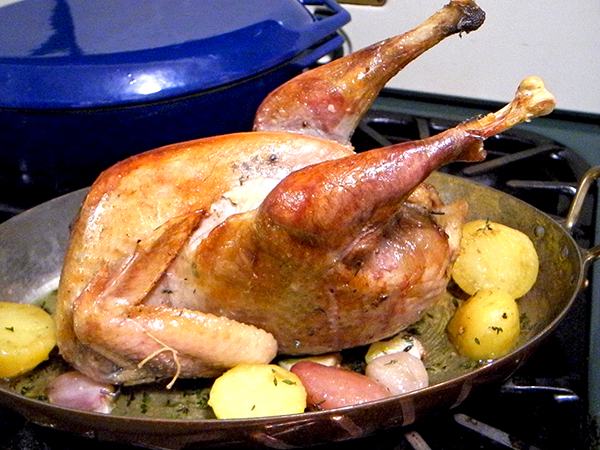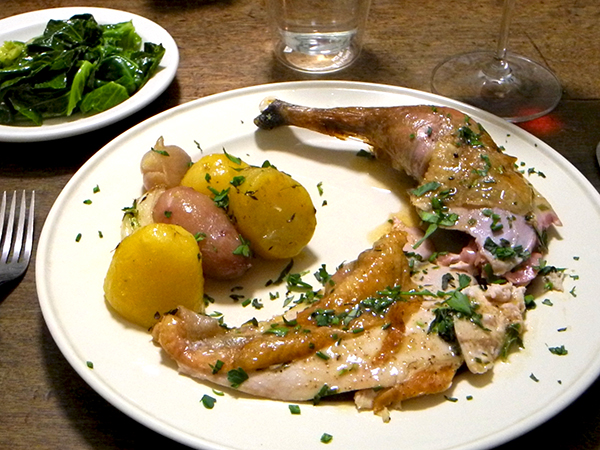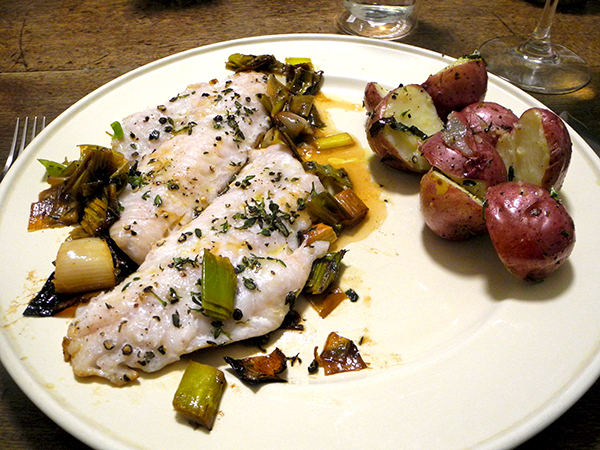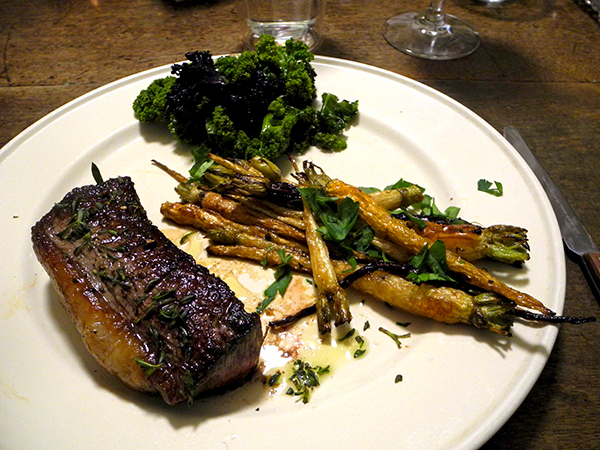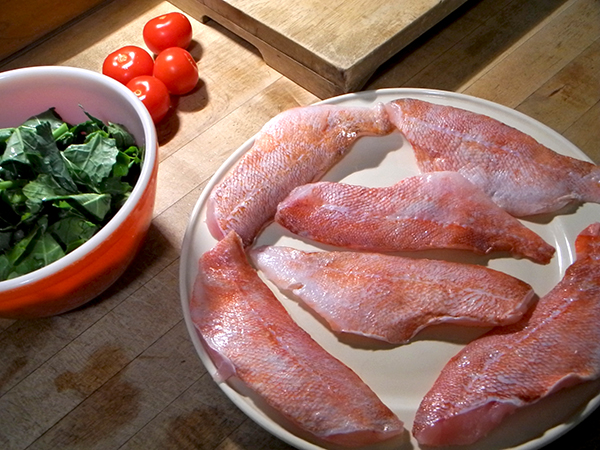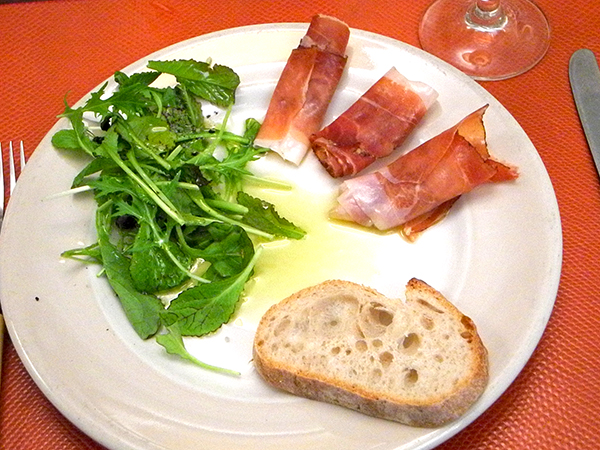possibly the best squid we had ever had, but I cannot explain why that was so
I was mostly concerned with assembling what I needed for a small dinner party the next night, Saturday, on a day when the forecast of a blizzard had already told me that I was not certain I would be able to find anything essential to my plan; the choice of an entrée for the night before was an afterthought.
But I had at least remembered to bring something home. I chose some squid, from Paul’s Pura Vida stand. It was something I had prepared many times before, using several different recipes, and I always enjoyed this cephalopod. It’s a favorite for both of us, because of its taste, the ease with which it can be prepared, its global ubiquitousness, and its sustainability.
This time I opted for the recipe which used the most lemon, because I had a supply of local fruit back at home, and it wasn’t going to last forever.
- three quarters of a pound of cleaned squid, bodies and tentacles from Pura Vida Fisheries, marinated for about half an hour (half of that time in the refrigerator) in a mixture of lemon zest and lemon juice (both from Fantastic Gardens of Long Island, in the Union Square Greenmarket), thinly-sliced garlic from Norwich Meadows Farm, olive oil, pungent dried Italian oregano from Buon Italia, salt, and pepper, then removed from the marinade and pan-grilled briefly over high heat, arranged on plates, sprinkled with fresh lemon juice and some chopped parsley from Eataly, served with halves of a tiny lime-like lemon (lemon-like lime?) from Fantastic Gardens of Long Island [the basic squid recipe, with more specific instructions appears here]
- one small-to-medium celery root from Norwich Meadows Farm, scrubbed, peeled, and cut into the size and shape of potato frites, tossed in a bowl with olive oil, several sprigs of thyme from Eataly, two cloves of garlic from Norwich Meadows Farm, unpeeled, salt, and pepper, spread onto a medium-size Pampered Chef unglazed ceramic pan, and roasted at 400º until brown and cooked through, removed, served on plates, and tossed with chopped parsley from Eataly
- the wine was a Spanish (Rueda) white, Naia D.O. Rueda 2014, from Verdejo old vines
- the music was Q2 streaming, ‘Sample Rate‘, which, according to the station, is “an evening devoted to the art of abstract electronic and electro-acoustic music”; memorably on this evening, we enjoyed pieces by Andris Dzenitis (specifically, ‘Les Livres de Ton Silence: L’Etrangere/Sonatine’), Peter Eotvos, Jacob Ter Veldhuis (JacobTV), Juris Karlsons, and John Zorn (we were too engrossed in conversation to ‘tune into’ the others)
